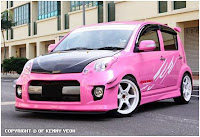Electric
Car Hybrids for 2009
It's hard to believe that the Toyota Prius hybrid went on sale in Japan in 1997. With the current energy crunch more and more car manufacturers are developing "greener" versions of their well-known brands. The infusion of Hybrid technology has made a big splash in the motoring world and its popularity as well as the growing concern for the environment has added to the demand for this type of vehicles, urging more vehicle manufacturers to add more of their vehicles in the hybrid bandwagon to capture more potential consumers in the market. Some build electric cars with no gas backup - just plug and go.
In 2007 Toyota added to it's hybrid car lineup with the Toyota Camry Hybrid, the third in Toyota's Hybrid vehicles. The Camry hybrid boasts of the performance of a top notch six-cylinder engine with the fuel economy of a four-cylinder engine. Although it is not as fuel efficient as the first Toyota hybrid, the Prius, the Camry hybrid is a whole lot better than the regular Camry. Since then Toyota has expanded its lineup again
Never to be left behind, giant Japanese car manufacture Honda, has also the Hybrid Accord and the Hybrid Civic. These two sedans offer what Hybrids are known for, less emission and less fuel consumption. They have plans for a new car in 2009.
The 2008 Honda Accord Hybrid alone combines luxury and fuel efficiency that is truly environment friendly. Even with a V6 engine that generates 253 horsepower, you can be sure that you will get more miles to the gallon. It is a nice change knowing that you get the luxury and power that you want and still get the fuel economy that we all deserve.
Then there is the 2008 Civic Hybrid which continuously provides the true essence of hybrid technology. Its ingenious engineering has rightly earned it its Advanced Technology Partial Zero-Emission Vehicle (AT-PZEV) rating. What this means is that you don't only get from point A to point B in less gas usage, but also save the environment by not adding to the air pollutants already swarming over it.
Joining the Hybrid car race in 2007 is General Motors second Hybrid vehicle, the 2007 Satrun Aura Hybrid sedan. This will be competing with other high-end hybrid cars such as the Toyota Camry Hybrid and the
Honda Accord Hybrid. Sporting a V6 engine as well, the Aura Green Line is dedicated to providing utmost engine power with minimal gas consumption. Its engineers claim that it will be able to generate 20 percent savings in fuel economy over its conventional model. They have added the Saturn Vue for 2008, with upgrades planned for 2009 and 2010, such as plug-in capable. Nissan entered the market with the 2007 Altima Hybrid and has a totally new model planned for 2010. In a deal inked with Toyota, Nissan will be dedicating five years into the project with the Hybrid Technology developed by Toyota. Volkswagen, not to be left behind has a new Touareg hybrid planned for 2009, and the 2010 Chevy Volt plug and play electric car.
The one thing they all have is common is that the initial costof ther electric car portion of the build is about $4,000-$5,000 more than the equivalent standard car. Even with $4 per gallon gasoline the improved mileage, anywhere from 9 mpg for the Honda Civic or 14 mpg for the Toyota Prius, does not provide a payback on the additional investment. It is a pretty much break even scenario - except for the impact on fossil fuel usage and pollution, which is the main reason most people will opt for the new green machines. With more and more vehicle manufacturers realizing the potential of
Hybrid vehicles, it wont be long before every car produced will be infused with the Hybrid technology. And as oil prices continue to soar and concerns for the environment are ever growing, we can all be sure that these vehicles will be welcomed with open arms.
If you want to covert your car to an all electric vehicle go to
http://www.electriccarbuild.infoJT is a developer, investor and engineer. Visit this website at
http://www.electriccarbuild.inf






